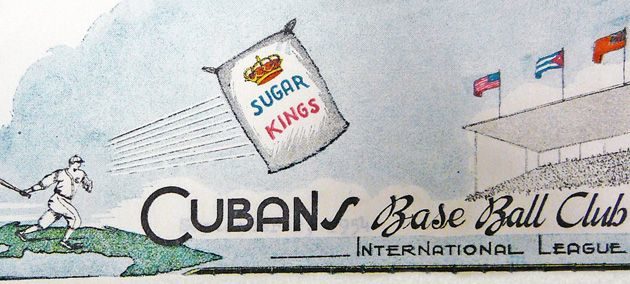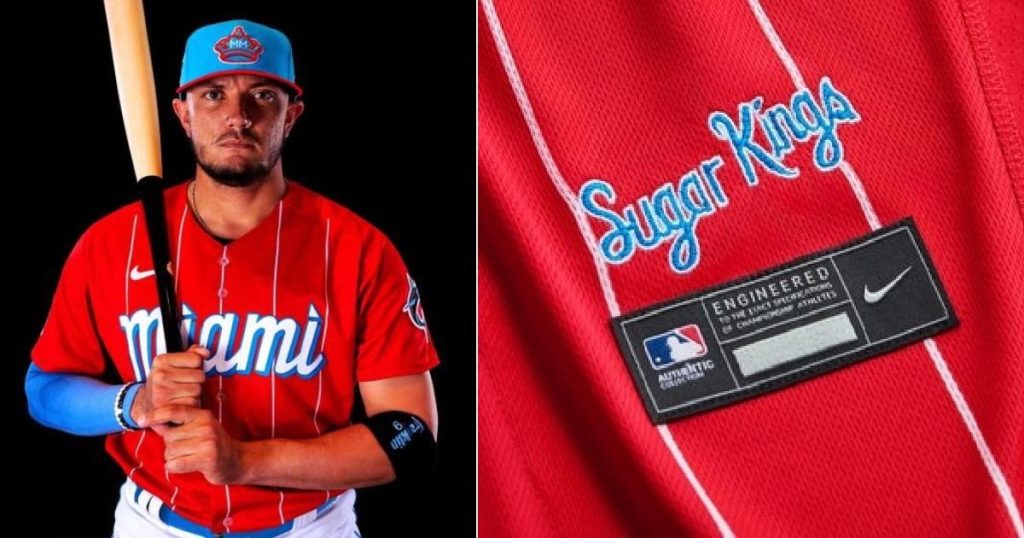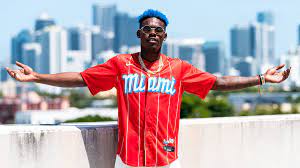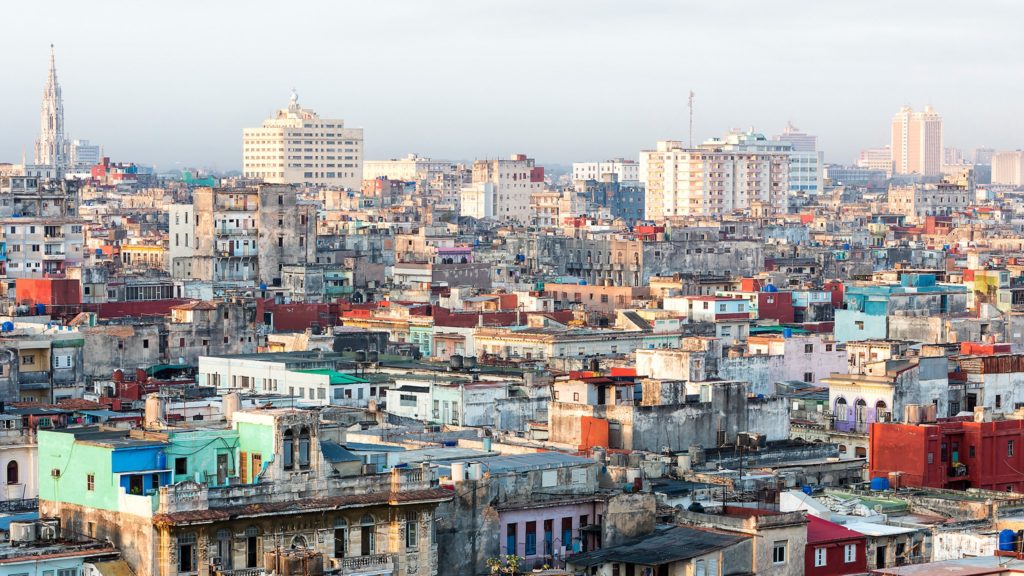THE CUBAN SUGAR KINGS STORY: THE PRIDE OF HAVANA AND “BOBBY” MADURO.
The red flannel that the Marlins will use during this May 22 in the confrontation with the New York Mets will not only be the new City Connect uniform of the franchise, but it will also mark the so-called Cuban Heritage Day.
The Miami Marlins took to the grass of Little Havana’s loan Depot stadium this Friday in a premiere uniform that houses a unique tribute to the history of Cuban baseball and to a Major League Baseball dream called “Cuban Sugar Kings.”
The red flannel that the Marlins will wear during this weekend in the confrontation with the New York Mets will not only be the new City Connect uniform of the franchise, but it will also mark the so-called “Cuban Heritage Day”, this Saturday 22 of May, with the deserved recognition of a pioneering institution in the promotion of Cuban and Latin American talent in the majors.
It is a day to celebrate in Cuba and Miami alike. But also in all the baseball countries of Latin America and the Caribbean that today have an overwhelming presence in the best baseball in the world.
I have spoken these days with several young players and fans of Major League Baseball who are unaware of this Cuban Major League Baseball chimera and the reasons for the brand new Miami team uniform, made in collaboration with the firm Nike.
VIDEOS – THE CUBAN SUGAR KINGS STORY
The Cuban Sugar Kings -also known as Havana Sugar Kings- were a minor league baseball team that played successfully in the International League (Triple-A) between 1954 and 1960. The Cuban franchise was affiliated with the Cincinnati Reds and had as headquarters of the Great Stadium of Havana, the current Latin American stadium.
It was a great project to put Cuba with its own team on the professional ball map in the United States and form a multinational team with Latin American players. And like so many things in our recent past, it was left truncated after the derailment caused after the arrival of Fidel Castro to power.
Behind this story of passion, perseverance and Cuban pride are the work of a visionary who, unfortunately, has not been praised with all his merits in the history of our baseball: businessman Roberto “Bobby” Maduro.
WHO IS “BOBBY” MATURE?
Born in Havana in 1916, into a family of Sephardic Jews who emigrated from Curaçao, attracted by the sugar boom at the beginning of the century in Cuba, Maduro played baseball in his youth with the Vedado Tennis Club, graduated from engineering At Cornell University in the United States, he ran sugar factories and became a determined entrepreneur in business and baseball.
He was co-owner of the Cienfuegos club in the Cuban Professional League and the architect of the construction in 1946 of the Great Havana Stadium, which is approaching its 75 years El Coloso del Cerro corresponded with the idea of modernizing the enjoyment of baseball in Havana and doubling the seating capacities of the old La Tropical stadium.
His vision was advanced, even, to conceive the expansion of baseball beyond the continental borders and take it to European and Asian scenarios, as it happened decades later.
VIDEOS – MIAMI & CUBAN SUGAR KINGS
The motto that then identified the plans cherished by Maduro is still heard in sports venues as motivation to bring the future closer: “One more step and we are here.”
Professor Roberto González Echevarría, the author of that monument in the history of Cuban baseball called The Pride of Havana (1999), considers that the Cuban project to establish the first major league franchise outside the territory of the United States was perfectly achievable.
“The Cuban Sugar Kings (never the Havana Sugar Kings) were created for two reasons. The first and most important was Bobby Maduro’s dream of turning the Cuban capital into the headquarters of a Major League team,” González Echevarría told CiberCuba. “This would have been possible due to the buoyant economic situation of the island in the 1950s, which is why Havana had a population capable of obtaining tickets and supporting a Major League team, apart from the magnificent state of the tourist industry that made the presence of visitors from the United States “.
The historian points out that three teams from the International League, in which the Cuban Sugar Kings played, became Major League franchises: Montreal, Toronto, and Miami.
“The second reason was to bring together fans from all over the island, that is, especially those who were habanistas or almendaristas, the ‘eternal rivals’ of the Cuban League … That is why the Cubans’ uniform had red and blue”, said González Echevarría.
THE CUBAN SUGAR KINGS STARTS
The team’s antecedents go back to 1946 when the Havana Cubans were born at the hands of businessman George P. Foster. That team was affiliated with the now-defunct Washington Senators and participated in the Florida International League (level C), in which it won two consecutive championships in 1947 and 1948.
A few years later, in 1954, the franchise was acquired by Maduro, renaming it Cuban Sugar Kings.
González Echevarría recalls that Cubans as a team name in baseball dates back to the first set of the Independent Leagues of Color, in the 1980s of the 19th century, and later to the Cuban Stars and New York Cubans of those leagues, and to their own Havana Cubans, his predecessor participant in the Florida International League, at the end of the 40s of the last century.
The Cuban Sugar Kings won the International League in the 1959 season, coinciding with the revolutionary epiphany that shocked the country. The manager of the group was Preston Gómez, Cuban legend of the Major Leagues.
The final championship series dispute was against the Minneapolis Millers and five of the seven games were played in Havana, due to a cold wave in Minnesota. González Echevarría considers that this series caused “a paroxysm of national sentiment.”
But the triumph of the Cuban Sugar Kings in Havana was the last clarion of the dream kneaded by Maduro.
In 1960, Fidel Castro nationalized all US property in Cuba, which directly affected the franchise. The Cuban Sugar Kings reached an agreement to relocate to Jersey City under the patronage of the Jersey City Jerseys.
Maduro strongly opposed it, calling it a serious mistake and an outrageous decision by the International League.
THE END OF A DREAM
But professional baseball was coming to an end in socialist Cuba. The Cuban Baseball League sealed its last season in 1961.
Facing colossal losses in his business and under a growing personal financial crisis, Maduro held out in Cuba until April 1961 and was able to leave the country two days before the Bay of Pigs invasion. He came out with $ 5 in his pocket, ending a utopia that crumbled to the runaway stubbornness of the revolutionary era.
Maduro returned to Cuba only once, in 1978, accompanying his old friend, the lawyer and banker Bernardo Benes, as part of a special committee of Cuban exiles, commissioned by the United States government to mediate before Havana for the liberation of hundreds of political prisoners.
“Perhaps the most moving event during the commission’s visit was Bobby Maduro’s visit to the Colón Cemetery to bring flowers to the grave of his late son [Felipe, who died of leukemia in 1954],” Benes recalled years later.
Bobby Maduro died in Miami in 1986, the victim of a brain tumor. A year after his death, the old Miami stadium – now defunct – was officially renamed Bobby Maduro Stadium.
The tribute that his native country and Cuban baseball owe him will necessarily be an episode from the future. Pending that moment, the Miami Marlins have now rescued a symbol of Maduro’s legacy and Cuban pride that is an indissoluble part of contemporary baseball history.
LOS CUBAN SUGAR KINGS STORY: THE PRIDE OF HAVANA Y “BOBBY” MADURO.
La franela roja que usarán los Marlins durante este 22 de Mayo en el enfrentamiento a los Mets de Nueva York no solo será el nuevo uniforme City Connect de la franquicia, sino que marcará el llamado Día de la Herencia Cubana.
Uniforme City Connect de los Marlins de MiamiFoto © Cortesía Marlins de Miami
Los Marlins de Miami salieron este viernes a la grama del estadio loan Depot de La Pequeña Habana con un uniforme de estreno que abriga un singular homenaje a la historia del béisbol cubano y a un sueño de Grandes Ligas llamado “Cuban Sugar Kings”.
La franela roja que usarán los Marlins durante este fin de semana en el enfrentamiento a los Mets de Nueva York no solo será el nuevo uniforme City Connect de la franquicia, sino que marcará el llamado “Día de la Herencia Cubana”, este sábado 22 de mayo, con el reconocimiento merecido a una institución precursora en la promoción del talento cubano y latinoamericano en las Mayores.
Es un día para celebrar en Cuba y Miami por igual. Pero también en todos los países beisboleros de América Latina y el Caribe que hoy tienen presencia arrolladora en el mejor béisbol del mundo.
He hablado en estos días con varios jóvenes jugadores y seguidores del béisbol de Grandes Ligas que desconocen esta quimera cubana de Grandes Ligas y las razones del flamante uniforme del equipo de Miami, realizado en colaboración con la firma Nike.
Los Cuban Sugar Kings -también conocidos como Havana Sugar Kings- fue un equipo de las Ligas Menores de Béisbol que jugó con éxito en la Internacional League (Triple A) entre 1954 y 1960. La franquicia cubana estaba afiliada a los Cincinnati Reds y tenía como sede el Gran Estadio de La Habana, actual estadio Latinoamericano.
Fue un proyecto grandioso para poner a Cuba con un equipo propio en el mapa de la pelota profesional en Estados Unidos y conformar un conjunto multinacional con jugadores latinoamericanos. Y como tantas y tantas cosas de nuestro pasado reciente, quedó trunco luego del descarrilamiento provocado tras la llegada de Fidel Castro al poder.
Detrás de esta historia de pasión, perseverancia y orgullo cubano está la faena de un visionario que, lamentablemente, no ha sido exaltado con todos sus méritos en la historia de nuestro béisbol: el empresario Roberto “Bobby” Maduro.
QUIEN ES “BOBBY” MADURO?
Nacido en La Habana en 1916, en el seno de una familia de judíos sefarditas que emigró desde Curazao, atraída por el boom azucarero de principios de siglo en Cuba, Maduro jugó béisbol en sus años juveniles con el Vedado Tennis Club, se graduó de ingeniería en la Universidad de Cornell en Estados Unidos, administró fábricas de azúcar y devino un decidido emprendedor en los negocios y en el béisbol.
VIDEOS – VIDA DE “BOBBY” MADURO
Fue copropietario del club Cienfuegos en la Liga Profesional Cubana y el artífice de la construcción en 1946 del Gran Estadio de La Habana, que se aproxima a sus 75 años El Coloso del Cerro se correspondía con la idea de modernizar el disfrute del béisbol en La Habana y duplicar las capacidades de asientos del antiguo estadio de La Tropical.
Su visión fue adelantada, incluso, para concebir la expansión del béisbol más allá de las fronteras continentales y llevarlo hasta escenarios europeos y asiáticos, como sucedió décadas después.
El lema que identificó entonces los planes acariciados por Maduro todavía se escucha en los predios deportivos como motivación para acercar el futuro: “Un paso más y llegamos”.
El profesor Roberto González Echevarría, autor de ese monumento de la historia del béisbol cubano que se titula The Pride of Havana (1999), considera que el proyecto cubano de establecer la primera franquicia de Grandes Ligas fuera del territorio de Estados Unidos era perfectamente alcanzable.
“Los Cuban Sugar Kings (nunca los Havana Sugar Kings) fueron creados por dos razones. La primera y más importante fue el sueño de Bobby Maduro de convertir la capital cubana en sede de un equipo de Grandes Ligas”, dijo González Echevarría a CiberCuba. “Esto habría sido posible por la boyante situación económica de la isla en los años 50, por lo que La Habana tenía una población capaz de obtener entradas y apoyar un equipo de Liga Mayor, aparte del magnífico estado de la industria turística que hacía imaginable la presencia de visitantes de Estados Unidos”.
El historiador apunta que tres equipos de la Liga Internacional, en la que jugaban los Cuban Sugar Kings, llegaron a ser franquicias de Grandes Ligas: el Montreal, el Toronto y el Miami.
“La segunda razón fue reunir a los fanáticos de toda la isla, es decir sobre todo a los que eran habanistas o almendaristas, los ‘eternos rivales’ de la Liga Cubana… Por eso el uniforme de los Cubans tenía rojo y azul”, opinó González Echevarría.
SURGEN LOS CUBAN SUGAR KINGS
Los antecedentes del equipo se remontan a 1946, cuando nacieron los Havana Cubans de la mano del empresario George P. Foster. Ese equipo estuvo afiliado a los ya desaparecidos Senadores de Washington y participaba en la Liga Internacional de Florida (nivel C), en la que ganó dos campeonatos consecutivos en 1947 y 1948.
Pocos años después, en 1954, la franquicia fue adquirida por Maduro, cambiándole el nombre por el de Cuban Sugar Kings.
González Echevarría recuerda que Cubans como nombre de equipo en el béisbol se remonta al primer conjunto de las Ligas Independientes de Color, en los años 80 del siglo XIX, y después a los Cuban Stars y los New York Cubans de esas ligas, y a los propios Havana Cubans, su antecesor participante de la Liga Internacional de Florida, a finales de la década del 40 de la pasada centuria.
Los Cuban Sugar Kings ganaron la Liga Internacional en la temporada de 1959, coincidiendo con la epifanía revolucionaria que conmocionó al país. El mánager del conjunto fue Preston Gómez, leyenda cubana de Grandes Ligas.
La disputa de la serie final de campeonato fue contra los Millers de Minneapolis y cinco de los siete juegos se disputaron en La Habana, debido a una ola de frío en Minnesota. González Echevarría considera que esa serie provocó “un paroxismo del sentimiento nacional”.
Pero el triunfo de los Reyes Cubanos del Azúcar en La Habana fue la última clarinada del sueño amasado por Maduro.
En 1960, Fidel Castro nacionalizó todas las propiedades estadounidenses en Cuba, lo cual afectó directamente a la franquicia. Los Cuban Sugar Kings llegaron a un acuerdo para trasladarse a Jersey City bajo el patronazgo de los Jersey City Jerseys.
Maduro se opuso rotundamente, y consideró que era un grave error y una decisión indignante de la Liga Internacional.
EL FIN DE UN SUEÑO
Pero el béisbol profesional llegaba a su fin en la Cuba socialista. La Liga Cubana de Béisbol selló su última temporada en 1961.
Enfrentando pérdidas colosales en sus negocios y bajo una creciente crisis financiera personal, Maduro resistió en Cuba hasta abril de 1961 y pudo abandonar el país dos días antes de la invasión de Bahía de Cochinos. Salió con $5 dólares en el bolsillo, poniendo fin a una utopía que se desmoronó a ritmo de la obcecación arrasadora de la era revolucionaria.
Maduro regresó a Cuba una sola vez, en 1978, acompañando a su viejo amigo, el abogado y banquero Bernardo Benes, como parte de un comité especial de exiliados cubanos, comisionado por el gobierno de Estados Unidos para mediar ante La Habana para la liberación de centenares de presos políticos.
“Tal vez el acontecimiento más conmovedor durante la visita de la comisión fue la visita de Bobby Maduro al Cementerio de Colón para llevar flores a la tumba de su difunto hijo [Felipe, fallecido de leucemia en 1954]”, según rememoró Benes años después.
Bobby Maduro falleció en Miami en 1986, víctima de un tumor cerebral. Un año después de su muerte, el viejo estadio de Miami -hoy desaparecido- fue oficialmente renombrado como Bobby Maduro Stadium.
El homenaje que le deben su país natal y el béisbol cubano será necesariamente un episodio del futuro. En espera de ese momento, los Marlins de Miami han rescatado ahora un símbolo del legado de Maduro y del orgullo cubano que son parte indisoluble de la historia del béisbol contemporáneo.
Agencies/ CiberCuba/ Wilfredo Cancio Isla/ Internet Photos/ YouTube/ Arnoldo Varona/ VIDEOS – PHOTOS – LA HISTORIA DE CUBA
THE CUBAN HISTORY, HOLLYWOOD.












